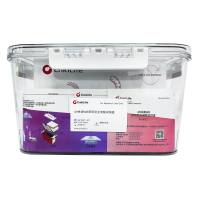Northern Blot Analyses Detecting Adrenergic Receptor mRNAs
互联网
821
Catecholamines exert their physiological effects via binding to cell-surface receptors known as adrenergic receptors (ARs). Based on the pharmacological and physiological effects of various agonists, the adrenergic receptors have been grouped into a single classification; several members have now been cloned and their corresponding deduced primary amino acid sequences established. The first adrenergic receptor to be cloned and sequenced was the hamster β2 -AR (1 ). Of the nine adrenergic receptors that have been identified and cloned to date, only the β1 -AR and β2 -AR are found in human lung (2 ). The adrenergic receptors are all members of the superfamily of seven-transmembrane domain, G-protein-coupled receptors; these receptors contain extracellular amino-termini, often glycosylated, and intracellular carboxyltermini. Within each receptor are seven clusters of hydrophobic-rich amino acids, which are believed to represent transmembrane segments, each connected by extracellular and intracellular loops. Comparing different adrenergic receptors, the third intracellular loop and cytoplasmic tails can be highly variable in both length and amino acid composition (3 ).









